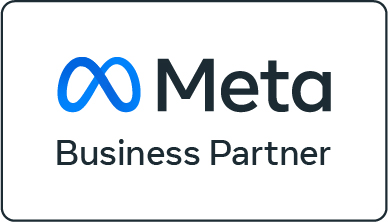Since Apple rolled out its iOS 14.5 privacy update, more people have updated their phones and the impact this is having on attributed sales and digital marketing has become clearer.
Equally as important is the role that the marketing efficiency ratio, discussed here (link), plays and is going to play in the future.
The Current Adoption Rate, meaning the number of people who have updated their Apple devices, as of the 20th of July is now 80%. This shows a gradual increase from previous key points such as the 17th of June where it passed 70% and as far back as the 10th of June where the adoption rate was 60%.
While Apple normally has very high adoption rates for its new updates, the most telling factor for marketers is that out of an 80% adoption rate of iOS 14.5 and above, as little as 5% have allowed Facebook to track their behaviour.

What does this tell us?
In short, the public perception of being “tracked” to receive personalised ads is quite negative, although we recently looked at the benefits of personalised ads here (link). And using metrics such as the marketing efficiency has become more crucial than ever to get a holistic view of ad performance.
What are we seeing?
We have seen a variety of changes and have had to adapt quickly in order to keep our various clients happy and comfortable. One of the reasons is that the nature of reporting has changed, therefore since the 10th of June there has been a decrease in attributed revenue from Facebook. For example, accounts that before attributed 70-80% of sales from Facebook are now hovering at 35-40%.
However, store sales have remained the same, ad spend has remained fairly similar, but revenue reported on Facebook and ROAS has dropped significantly – see screenshot below for a more detailed view of this occurring.

What are we doing?
Now, more than ever, it’s important to report on not just Facebook Metrics. As an agency we have adjusted all our reporting (both internal and external) to make sure we read as much data as possible.
Our main focal point of guidance to do this all has been the marketing efficiency ratio, or MER. You can refer to the link above in the introduction to find out all about why we are using it and what it means.
Next on our list is simplifying campaign structures and making use of Google Analytics to read the data.
We’re focusing on less campaigns and more on data points grouped together so we know where the traffic is coming from. We’re testing on offers/angles setup for campaigns rather than a full customer journey split out so we know what campaign is sending what traffic. This gives us a better understanding of which campaigns are the best performers and get the highest results, meaning better campaigns that speak to people and draw them in.
Using first party data more (keeping people on the platform – Facebook) – we can see 100% of the people that engaged with an ad or saw a video. We lose a lot of traffic as soon as we send someone to a website because a lot of people have opted out. Therefore, when we send people to a website and they have opted out of tracking, we can’t retarget that person.
When people watch a video on Facebook, or have engaged with an ad on Facebook, they do that ON Facebook. Because we still have the data ON Facebook, we can retarget ALL people that viewed a video or engaged with an ad. As soon as we send them OFF Facebook, we lose people because they have opted out.
More creative and angles testing than ever, as this is the main element we can see in campaigns. Our robust testing strategies are always growing, evolving and innovating to suit trends to give our clients the best chance of success.
And it doesn’t only stop at Facebook and Instagram. While we have always offered other marketing solutions, we have seen positive growth in combining more touch points together. This includes harnessing the power of email, SMS and Messenger Bots to access a wider range of customers, connecting with them in diverse ways.
Most of all, constantly testing and adapting – this is not going away. The only way to win is to keep testing.
What’s to come in the future
MER is the way forward, especially short-term with Facebook not being able to show the right conversions. This way of measuring is still allowing us to scale client accounts and it will be the most important metric during Q4 for account scaling.
As our mindset starts shifting towards Black Friday and how to scale accounts to break store records and such, having a trusted agency who can offer you peace of mind is of utmost importance.
If you’re focused on long-term stability and growth, then book a call with us today, no strings attached, and see what we can do for you.








